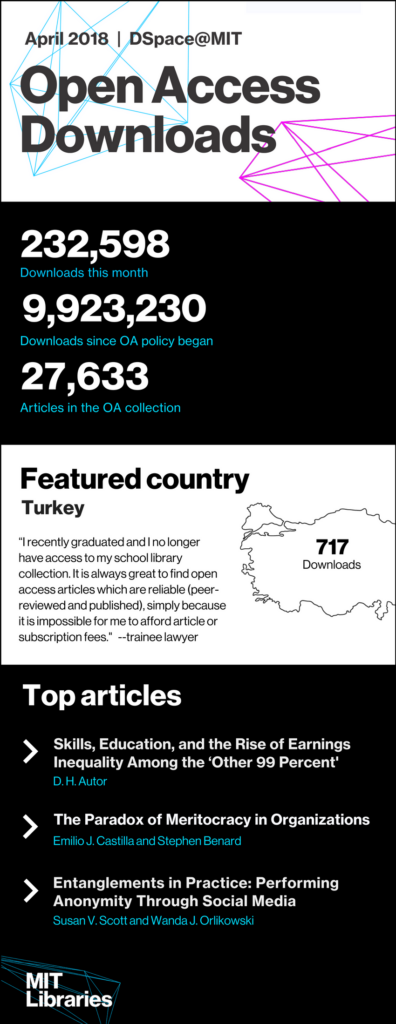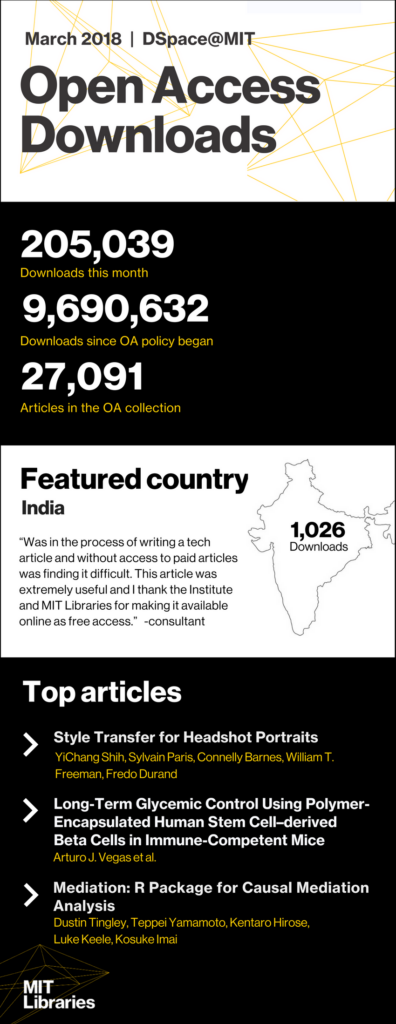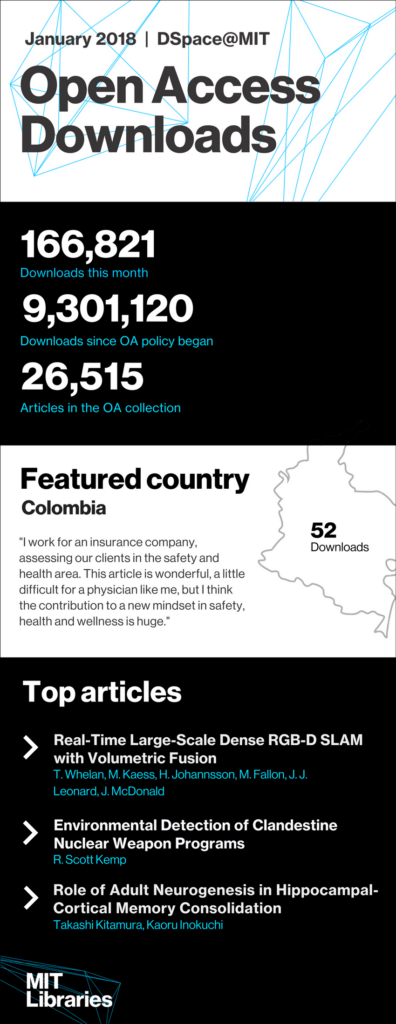 As of May 2018, readers around the world have downloaded articles from the Open Access Collection of DSpace@MIT more than 10 million times. The collection includes scholarly articles by MIT-affiliated authors made available through open access policies at MIT or publisher agreements.
As of May 2018, readers around the world have downloaded articles from the Open Access Collection of DSpace@MIT more than 10 million times. The collection includes scholarly articles by MIT-affiliated authors made available through open access policies at MIT or publisher agreements.
See your own download statistics or those of a particular MIT department, lab, or center, or find more reader comments and global statistics.
Top downloaded articles for May:
Physical and Mechanical Properties of PLA, and Their Functions in Widespread Applications — A Comprehensive Review, Shady Farah, Daniel G. Anderson, Robert Langer
ImageNet Large Scale Visual Recognition Challenge, Olga Russakovsky, Jia Deng, Hao Su, Jonathan Krause, Sanjeev Satheesh, Sean Ma, Zhiheng Huang, Andrej Karpathy, Aditya Khosla, Michael Bernstein, Alexander C. Berg, Li Fei-Fei
Contact Angle Hysteresis: A Review of Fundamentals and Applications, H. B. Eral, D. J. C. M. ’t Mannetje, J. M. Oh
Questions or comments? Email us: oastats@mit.edu
 The
The  The
The  The
The  The
The